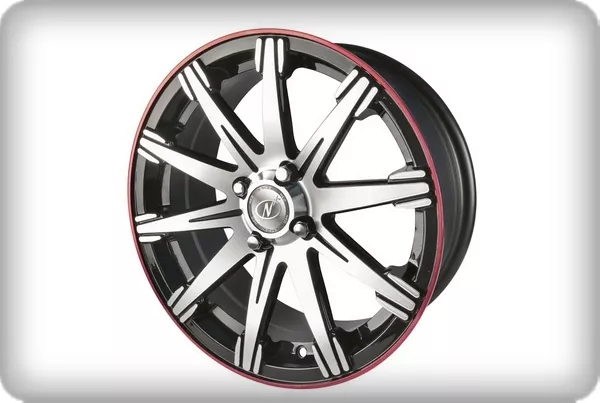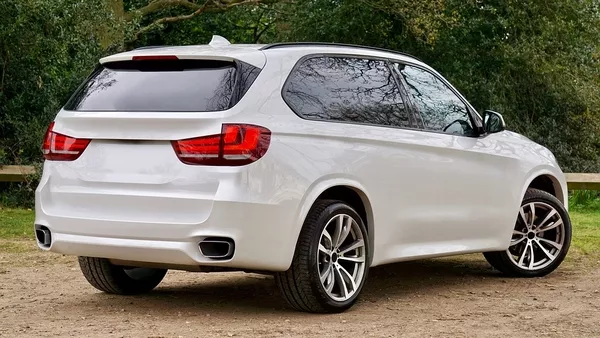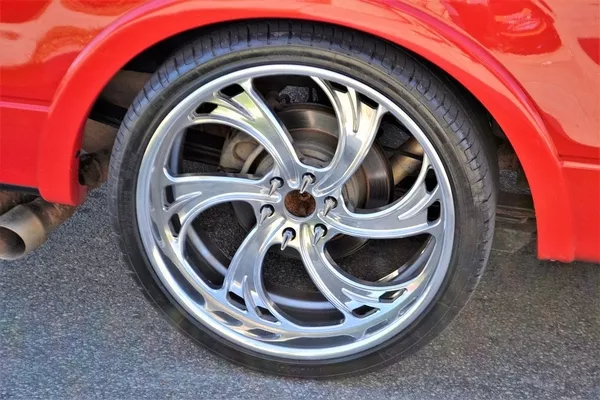For some people, driving is a contest, which is why they exert a lot of effort to outrun and outpace other drivers in getting to their destination, as if some imaginary prize was waiting for them.
Luckily, more sensible folks treat driving as something akin to a dance, where elegance, smoothness and timing are more important in contributing to a wonderful experience overall on the road.
And as in an actual dance, the key to the kind of performance you want to achieve with your car rests in the shoes, or wheels, that are fitted on your ride. There are two common types installed on road-going cars these days: Steel and alloy wheels.
Steel Wheels vs. Alloy Wheels | Did You Know?
>>> Related: The basic types of car wheels and rims
1. Steel wheels
Steel wheel overview
Steel wheels or steelies have been around for decades as standard equipment.
They are usually fitted on trucks and base-model cars; on the latter, they are usually accompanied by wheel covers or hubcaps. As you can probably guess, these wheels are not exactly for aesthetic purposes, since they’re very basic and utilitarian in terms of appearance.
These wheels are typically made from an alloy of iron and carbon. The relatively simple production process involved in making steel wheels accounts for their basic designs.
DIY: Refinishing Steel Wheels
The first part of steelies is the center which is made from a single solid piece of steel, stamped by machine to produce a somewhat ornamental hub pattern (such as circles and triangles) as well as holes for the lug nuts. This is joined to the second part, the rim, made from a separate metal to provide structure. After the two parts are welded together, they are polished and coated.
>>> Related: The Anatomy of a Vehicle: What are cars made out of?
Advantages of using steel wheels
What you get with installing steelies is durability. Since they’re made of a heavier material, steel wheels are very sturdy, able to endure punishing driving conditions whether you’re driving over potholes on city streets or one of the numerous ruts on your trips to the province.
Besides physical impacts, steelies can also withstand chemicals such as road tar used on yet another asphalting project, or even urine from your neighbor’s yet-to-be-potty-trained pet dog.

Steel wheels can better withstand road impacts while driving
In the event that steelies do suffer from the occasional dents or dings, they’re pretty easy to repair; just hammer the damage part back to form and you’re all set. Cosmetic damage isn’t really an issue where steelies are concerned, since the materials they’re made from are naturally tough, so surface flaws such as scratches can actually enhance a steel wheel’s appearance.

Steel rims are more utilitarian in looks and function
While the “unsprung weight” on steel wheels can be more punishing on your vehicle’s suspension components, the flipside is that it makes the vehicle more stable in low-traction conditions.
When you’re driving on slippery roads or muddy trails for instance, you will appreciate the sense of solidness and heft on the ground. And in countries that experience snow at certain times of the year, car owners will routinely switch out their alloy wheels for steelies in the event of adverse weather conditions.

One benefit of steel wheels is they increase stability on slippery roads
The most important benefit of steel wheels is cost. They’re relatively inexpensive to manufacture, which makes them cheaper to replace over alloy wheels (usually 75-80% less).
All in all, steel wheels are a good option for daily drivers where looks are not nearly as important as longevity and ease of maintenance, as well as frequent runs to far-flung places where the roads are just as unpredictable as the drivers who inhabit them.
Disadvantages of using steel wheels
Steelies are notable for their weight, which can increase a vehicle’s center of gravity. They certainly won’t help you in accelerating faster from a standstill, nor will they make you more agile on the road.
Fuel economy will also take a hit, as the car’s engine will have to work harder in hauling the extra weight on all four wheels (five if you count the spare, which is where steel wheels are commonly used).
2. Alloy wheels
Alloy wheel overview
These are the pricier set of shoes, usually installed on upper-spec variants in the case of brand-new cars. Until the last decade, alloy wheels can only be found on high-end models such as sports and luxury cars; these days, they can be found as standard equipment even on subcompact and city cars.
How Its Made - Alloy Wheels
Alloy wheels are typically made of aluminium or magnesium combined with nickel, with the wheel being cast by pouring molten alloy into a pre-set mold. Nickel provides the necessary stiffness for the structural integrity of the alloy wheel, and by adjusting the amount of nickel in the mix, manufacturers can create alloys with varying degrees of malleability and pliability, resulting in a wide range of available designs and patterns.

Alloy wheels come in a variety of shapes and sizes
Different kinds of alloy wheels are available on the market, with varying price points depending on the complexity of the design, the materials used, and the process involved. There are two-piece wheels comprised of the wheel center and the rim, joined by screws running around the wheel center, and reinforced by sealant; some designs feature a three-piece rim to allow for adjustments in wheel width.
Then there are forged aluminium wheels, achieved by subjecting the alloy to intense levels of heat and pressure, crushing the metal into a wheel that has extreme density and immense strength.
But there are also replica alloy wheels that mimic the look of original alloys without the requisite strength and durability; these are dangerous since they may not be able to withstand the rigors of driving as well as genuine alloy wheels.
Advantages of using alloy wheels
One advantage of alloy wheels is that they are definitely better from an aesthetic standpoint, since they can be fashioned into almost any size and shape. Multiple-spoke wheels, banana-types, spirals, turbines, even teddy bears – the possibilities for customization are practically endless. There’s even a range of finishing options, from painting, polishing, to chroming. Aftermarket alloys are one of the first things that owners slap on to their rides if they want to improve the looks.

Alloys can dramatically change the look of your car
>>> See more: If The Shoe Fits: Choosing Aftermarket Wheels
Another benefit is the lighter weight, compared to steelies. They exert less strain on your car’s suspension system, and they provide better acceleration, which is why they are commonly found on performance cars.
A car fitted with alloy wheels behaves significantly differently from a car running on steelies, especially in terms of agility. When extreme driving conditions warrant it, alloy wheels are able to dissipate heat generated by the brakes better than steel wheels. And since they’re lightweight, alloy wheels also return better fuel economy.

Some alloy wheels have fancy designs
Disadvantages of using alloy wheels
But there are downsides to alloy wheels too. Since they’re made of lighter materials, alloy wheels are not as sturdy as steelies.
It’s not unusual to see alloy wheels become vulnerable to becoming bent, cracked or deformed with daily use. When they scrape the curb, the damage is quite visible and can be upsetting for some owners. Acid cleaners and saltwater can also render cosmetic damage to alloys.
What Carmakers Don't Want You to Know About Alloy Wheels
Another disadvantage of alloy wheels is in terms of cost. As mentioned earlier, alloys are pricier to manufacture, and while damaged steel wheels can make do with a little hammering and paint to look like new again, alloys may need to be reforged or recast to return to their formerly pristine condition. And the variety of finishes they come in means that maintenance isn’t a one-size-fits-all affair.
Steel wheels vs Alloy wheels: Verdict
So the next time you search for a new set of shoes for your car, carefully consider the pros and cons of either wheel type, what you’ll most likely use it for, maybe even how long you’ll intend to keep them on your ride. And remember, whichever you choose, always remember to get your wheels in the right size (or make suitable modifications where appropriate), so that they can return years of driving satisfaction.
>>> You might like to read:












